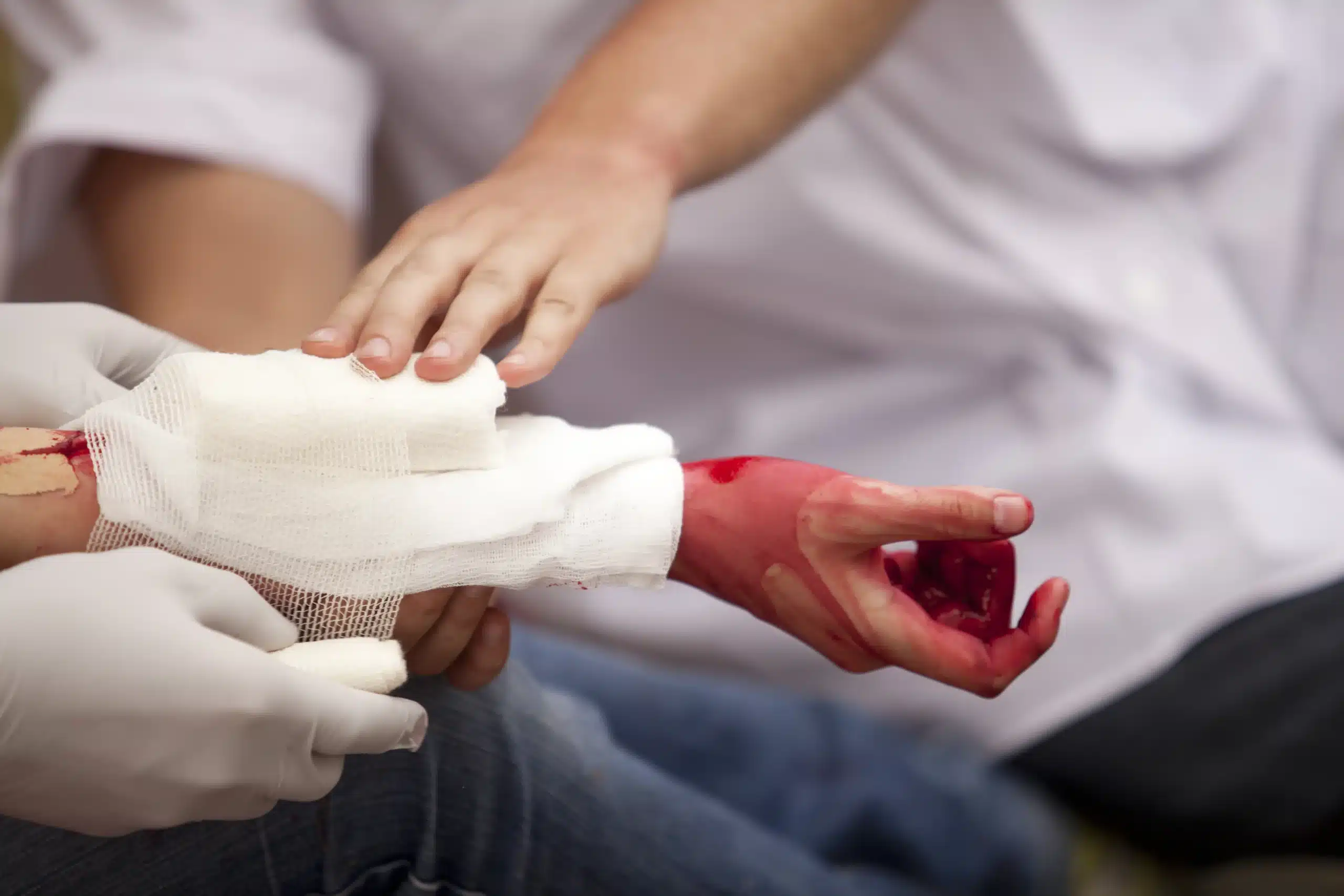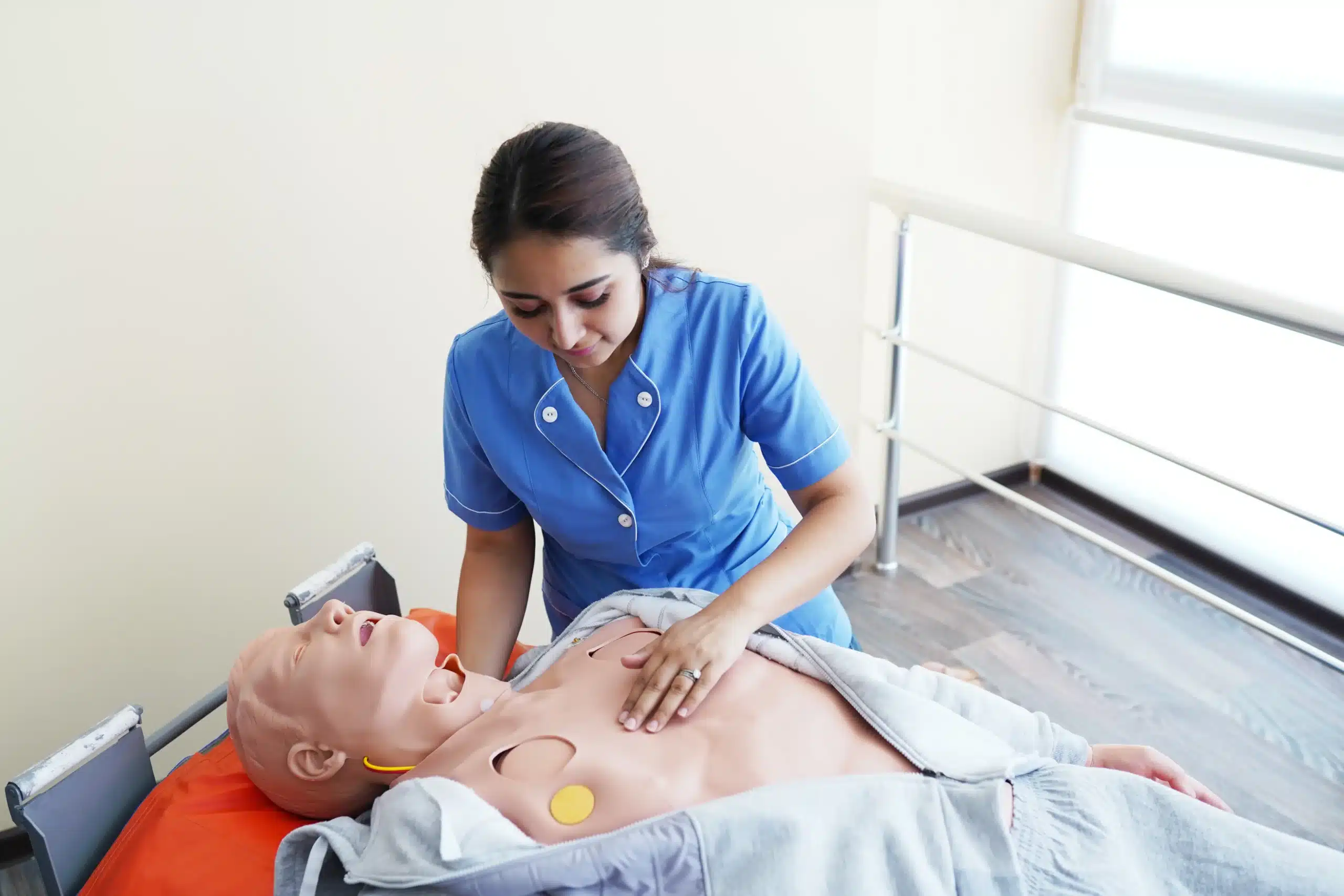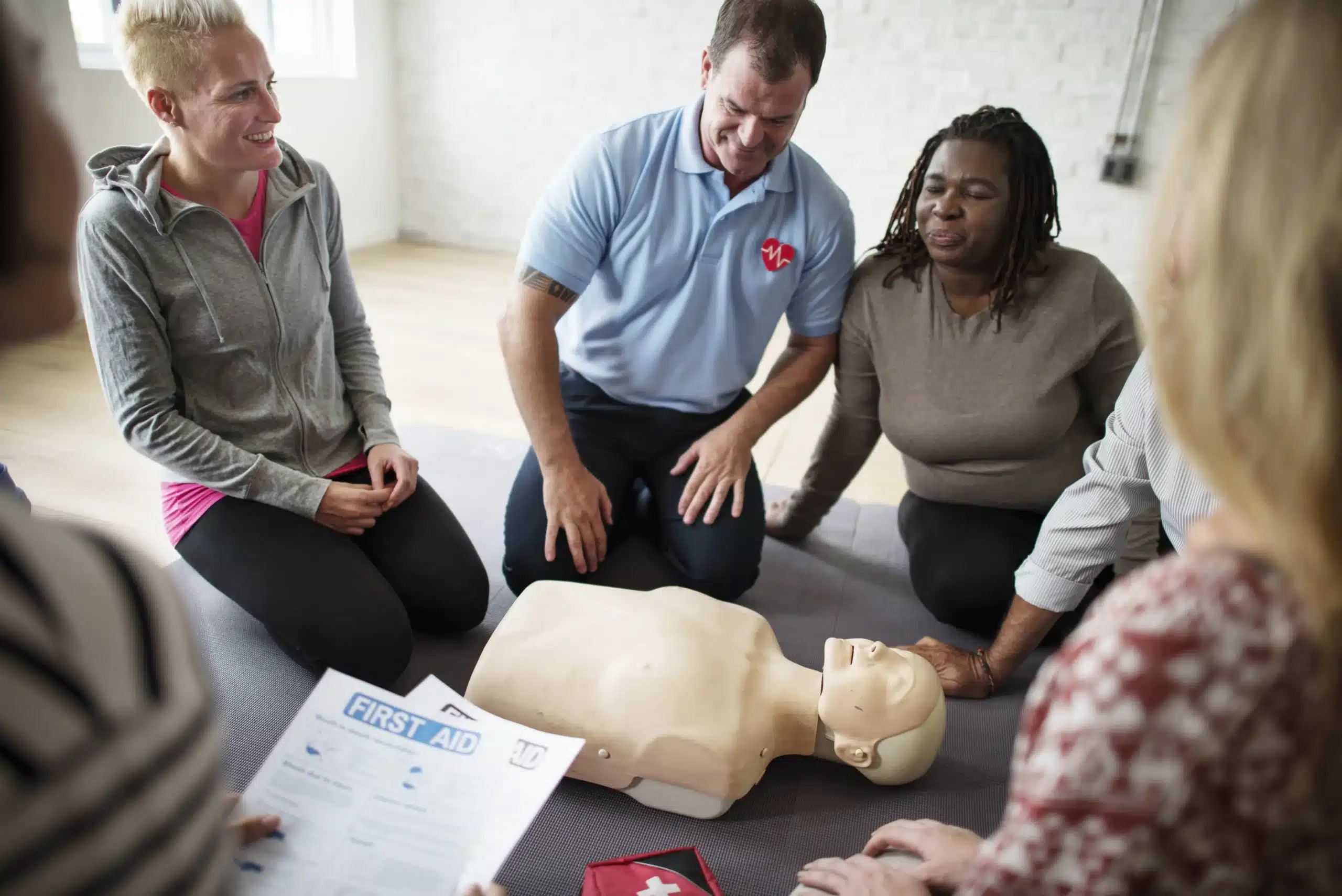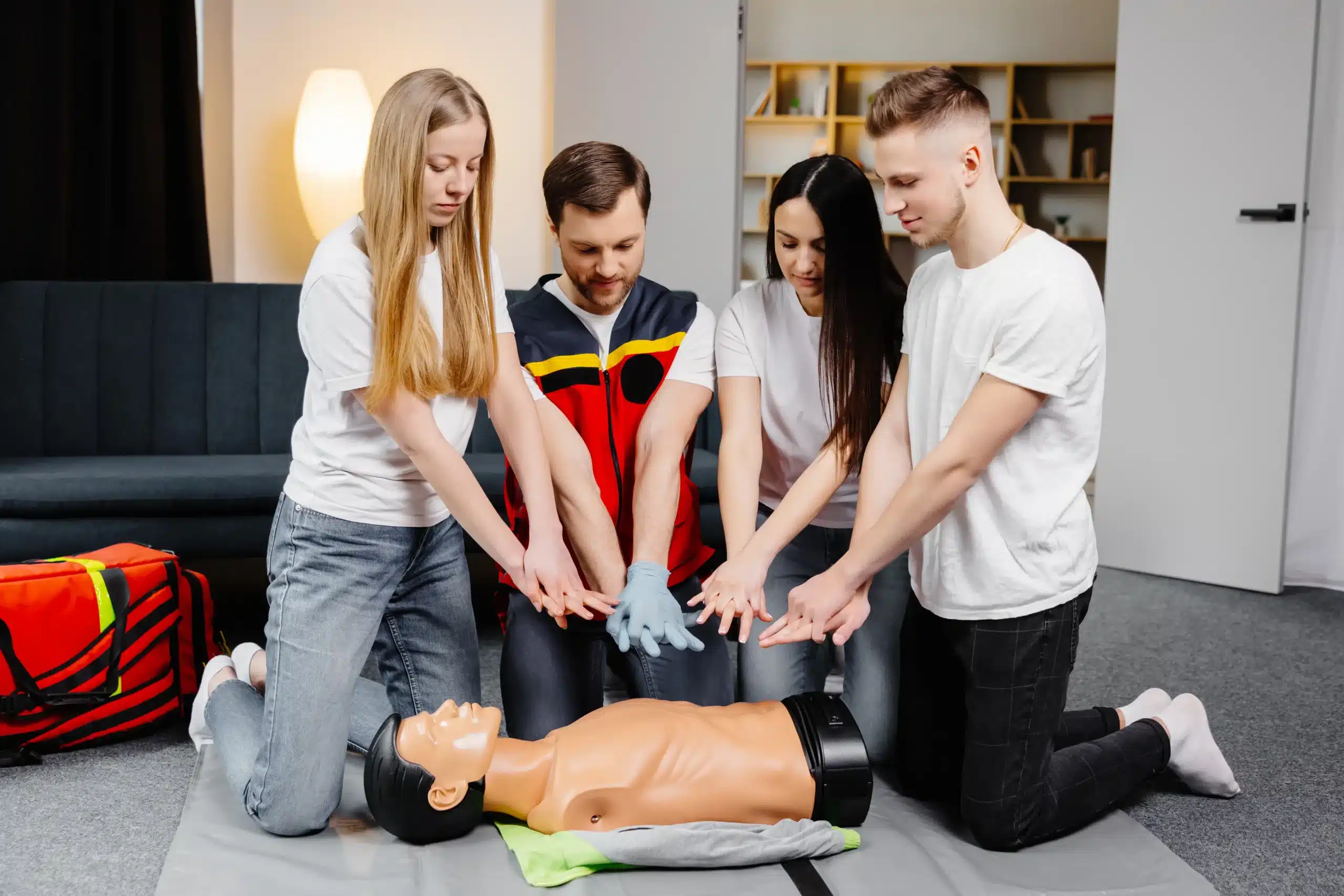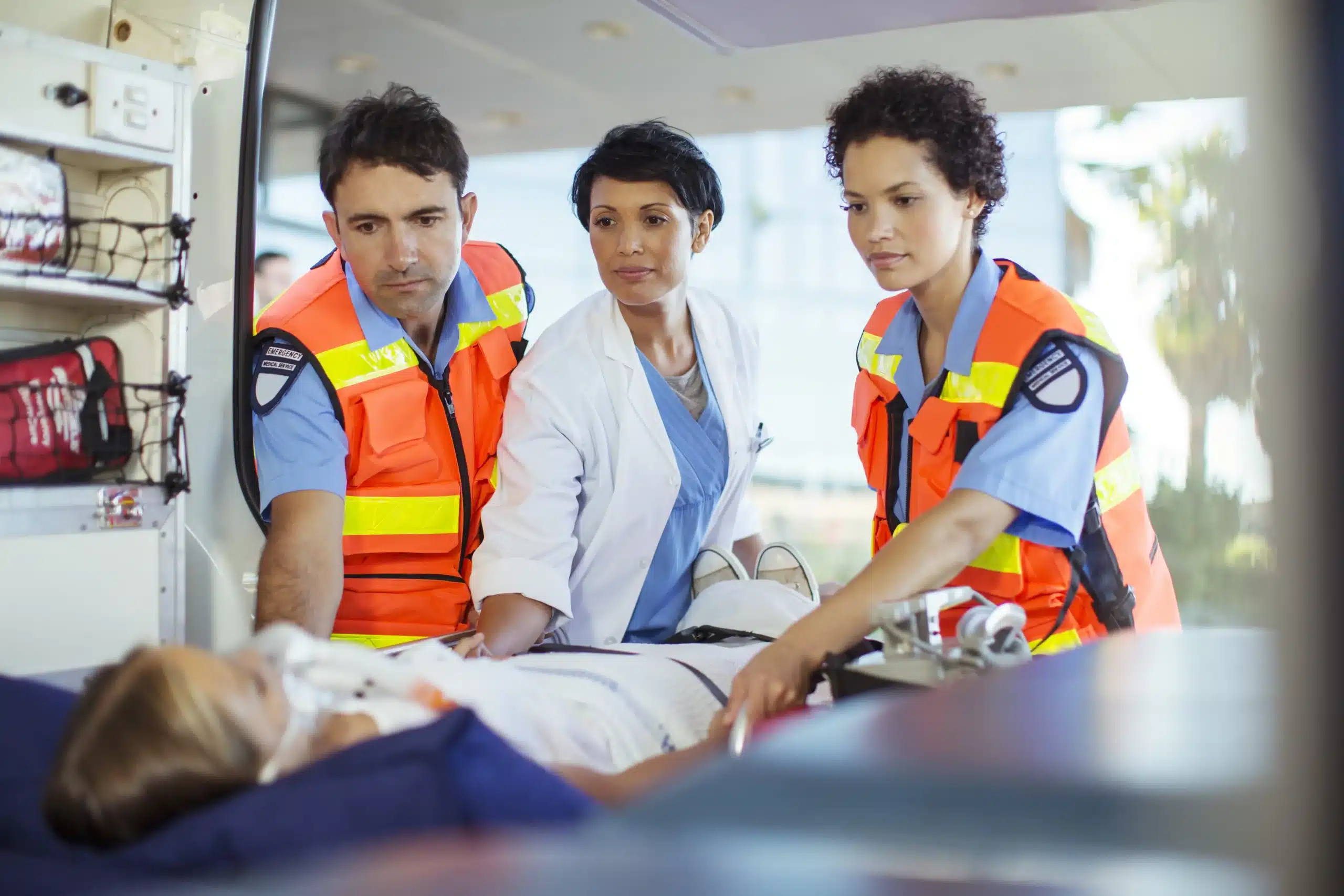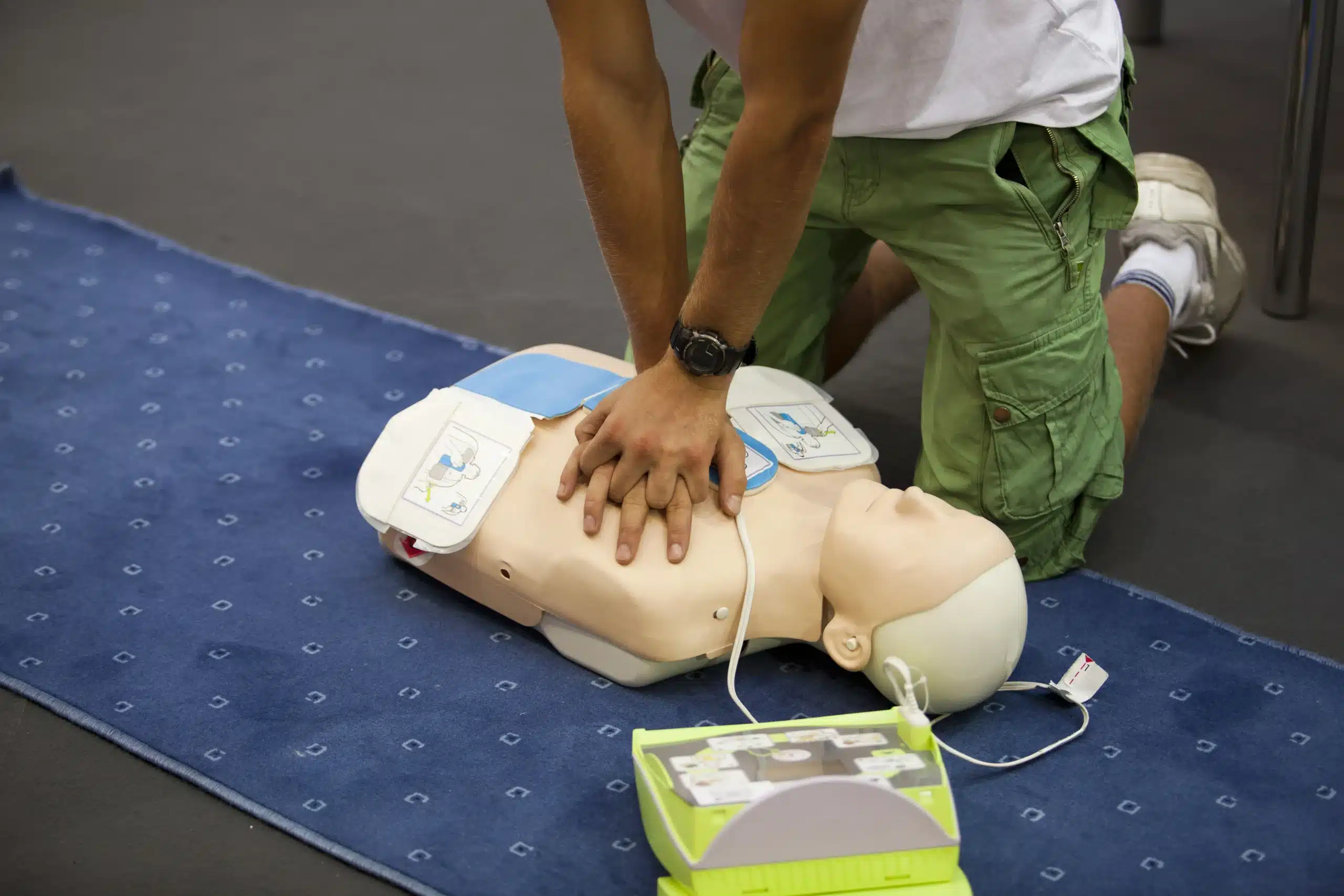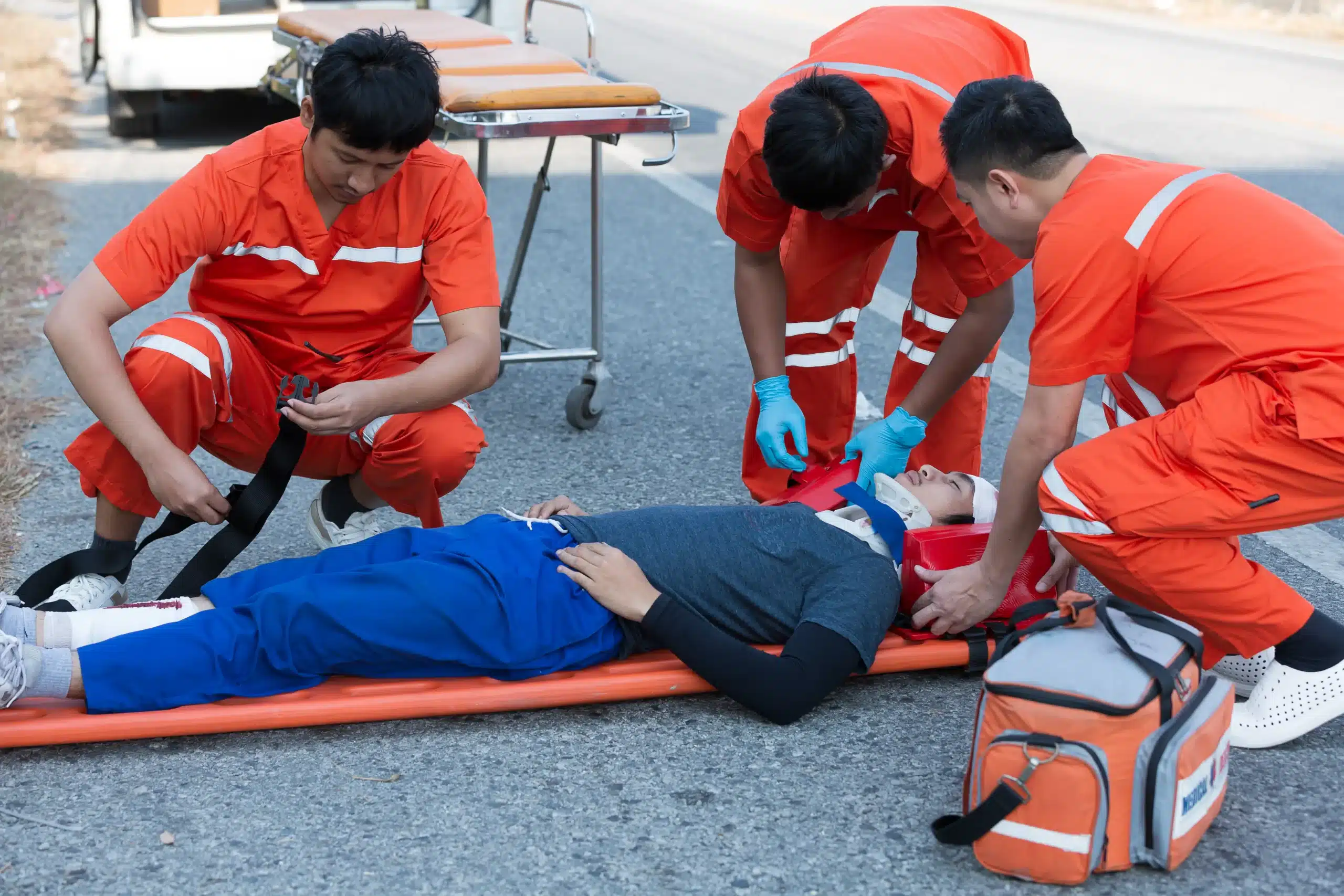Emergencies can happen anytime, anywhere. Would you know what to do? BLS training equips you with the skills and confidence to respond effectively in critical situations, potentially saving a life. This comprehensive guide will walk you through the ins and outs of BLS certification, covering everything from the essential skills taught to finding “bls training near me.” We’ll address common questions, debunk myths, and provide actionable steps to get certified. Whether you’re pursuing a career in healthcare or simply want to be a more prepared and confident individual, this guide will empower you to make a difference.
Key Takeaways
- BLS skills empower anyone to save lives: From healthcare professionals to everyday people, BLS training equips you with the skills to respond effectively in emergencies. It’s about more than just CPR—it’s about confidence and preparedness.
- Flexible training options fit your lifestyle: Choose from in-person classes, online courses, or blended learning to find the format that best suits your schedule, learning style, and budget. Consider what works best for you and find a reputable provider.
- Maintain your skills for long-term preparedness: BLS certification is not a one-time event. Regularly refresh your knowledge and skills through renewal courses and continuing education to stay up-to-date with the latest guidelines and maintain your confidence in emergencies.
What is BLS Training and Why Do You Need It?
Basic Life Support (BLS) certification equips you with the skills to respond to cardiovascular emergencies and other life-threatening situations. It’s a critical credential for healthcare providers and a valuable asset for anyone who wants to be prepared for an emergency. Let’s break down what BLS training entails and why it’s so important.
BLS Definition and Key Skills
BLS certification goes beyond basic CPR. It covers a range of essential skills, including high-quality chest compressions, rescue breaths, using an automated external defibrillator (AED), and relieving choking. These techniques are designed to maintain oxygenation and circulation until professional medical help arrives. BLS training emphasizes early recognition and intervention, two factors that can significantly impact survival rates. For more information on BLS Certification, visit our BLS page.
Who Needs BLS Certification?
While often associated with healthcare professionals like doctors and nurses, BLS certification is beneficial for a much wider audience. Anyone working in a healthcare setting, including medical assistants, dentists, and physical therapists, typically needs this training. It’s also frequently required for those in roles like lifeguards, teachers, coaches, and childcare providers. Even if not mandated by your job, having BLS skills can make you a valuable asset in your workplace and community. Consider getting certified if you’re a parent, caregiver, or simply someone who wants to be prepared for any situation. This article further clarifies the differences between BLS and other certifications.
Debunking Common BLS Misconceptions
One common misconception is that BLS certification is overly time-consuming. In reality, these courses are designed to be efficient and manageable, even for busy professionals. Another myth is that it’s only for medical personnel. As we’ve discussed, the skills taught in BLS training can be valuable for anyone. BLS certification is an investment in your own preparedness and the well-being of those around you. Don’t let these common myths about BLS certification hold you back.
Real-World Impact of BLS
Knowing BLS can empower you to make a real difference in a critical situation. Studies show that bystander CPR significantly increases the chances of survival following cardiac arrest. BLS training provides the confidence and competence to act quickly and effectively, potentially saving a life. It equips you with the skills to administer CPR, use an AED, and manage airways—all crucial steps in the chain of survival. These guidelines highlight the importance of BLS training. Beyond the immediate impact, BLS certification can also open doors to career advancement and provide peace of mind knowing you’re prepared for the unexpected.
Find BLS Training Near You
Now that you understand the importance of BLS certification, let’s explore how to find a course that fits your needs. Whether you prefer online learning or the hands-on experience of in-person training, several options are available.
Online Resources for BLS Classes
Online BLS certification courses offer a convenient way to learn essential lifesaving skills. These courses often incorporate interactive modules, videos, and simulations to provide a comprehensive learning experience. You can study at your own pace and complete the certification from home. Some online courses, like those offered by ACLS Medical Training, even offer continuing education credits for healthcare professionals.
Local Organizations Offering BLS Training
Several organizations offer in-person BLS training courses. The American Red Cross, for example, provides BLS certification and renewal training in various locations. These courses typically involve hands-on practice and demonstrations, allowing you to develop your skills under the guidance of experienced instructors.
Dublin CPR Classes: Your Local BLS Experts
If you’re in the Dublin, California area, Dublin CPR Classes is your go-to resource for BLS training. We offer comprehensive BLS courses that meet American Heart Association standards. Our experienced instructors provide personalized guidance and ensure you gain the confidence to respond effectively in emergencies. Serving Dublin, Livermore, and San Ramon, we offer convenient locations and schedules. You can also explore our group discounts for cost-effective training. We also offer the American Heart Association’s RQI program for quick and convenient online certification renewal. Our commitment to low prices and dedicated customer service sets us apart.
Other BLS Providers in Dublin, CA:
American Red Cross
The American Red Cross often extends its services to various locations, so it’s worth checking if they offer BLS courses near you. They frequently provide both in-person and blended learning options, combining online modules with hands-on practice.
American Heart Association
While the American Heart Association doesn’t directly offer classes, they set the standards for BLS training. Many organizations offer training that aligns with these standards. You can use their website to find a training center near you.
Local Hospitals and Medical Centers
Hospitals and medical centers in your area may offer BLS training courses for their staff and the community. Check with your local hospitals or search online for training opportunities.
Community Colleges
Community colleges frequently offer continuing education courses, including BLS certification. These courses can be a cost-effective way to gain essential lifesaving skills. Check with your local community college for available courses.
Choose the Right BLS Training Format
Finding the right BLS training format depends on your learning style, schedule, and budget. Let’s break down the pros and cons of each option so you can make the best choice for your needs.
In-Person Classes: Hands-on Learning
In-person BLS classes offer a structured learning environment with direct interaction with an instructor and other students. This format excels at providing hands-on practice, crucial for mastering essential skills like CPR and using an AED. You’ll receive immediate feedback and have the opportunity to ask questions in real-time. If you thrive in a traditional classroom setting and value hands-on learning, in-person training might be your best bet. Dublin CPR Classes offers in-person BLS training right here in Dublin, CA.
Online Certification: Flexibility and Convenience
Online BLS certification provides ultimate flexibility. You can learn at your own pace, anytime, anywhere. This format is ideal for busy professionals, parents, or anyone with a packed schedule. Online courses typically cover the same core material as in-person classes, including CPR, AED use, and other essential life-saving techniques. While online learning offers convenience, choosing a reputable provider that aligns with the latest American Heart Association guidelines is important. For a convenient online renewal option, check out our friends at RQI.
Blended Learning: Combining Digital and Practical Skills
Blended learning combines the best of both worlds. You’ll complete the coursework online at your own pace and then attend a shorter in-person session to practice your skills and complete a skills assessment. This format offers a good balance of flexibility and hands-on learning. It’s a great option if you want the convenience of online learning but also recognize the importance of practicing under the supervision of a certified instructor.
Factors to Consider When Choosing a Format
When deciding which BLS training format is right for you, consider these key factors:
- Learning Style: Are you a visual, auditory, or kinesthetic learner? Do you prefer structured learning or self-paced study?
- Schedule: How much time can you dedicate to BLS training? Do you need a flexible option that fits around your existing commitments?
- Budget: In-person classes can sometimes be more expensive than online options. Consider your budget and look for group discounts if you’re training with colleagues or friends. Dublin CPR Classes also offers a low price guarantee.
- Location: If you opt for in-person or blended learning, consider the training center’s location. Dublin CPR Classes serves Dublin, Livermore, and San Ramon. Check out our Northern CA CPR directory for more options.
- Hands-on Practice: How important is hands-on practice to you? If you’re new to BLS or prefer a more tactile learning experience, in-person or blended learning might be a better fit. If you’re comfortable with online learning and confident in your ability to practice skills independently, a fully online course could work well.
What to Expect During BLS Training
So, you’ve decided to get BLS certified—fantastic! Here’s a rundown of what you can expect during your training. Knowing the process ahead of time can help you feel prepared and confident.
Course Structure and Duration
BLS training courses are designed to be comprehensive and efficient. Like the training offered at our Dublin CPR Classes location, most courses follow a structured curriculum developed by organizations like the American Heart Association or the American Red Cross. You’ll cover essential topics such as recognizing life-threatening emergencies, performing high-quality CPR on adults, children, and infants, using an AED, and providing relief for choking victims. The duration of BLS training can vary, but you can typically achieve certification in a single day—often within 4.5 hours.
Hands-on Practice and Skill Assessment
BLS training isn’t just about lectures and textbooks. Hands-on practice is a critical component, allowing you to develop the muscle memory and confidence needed to perform BLS skills effectively in real-life situations. Expect to participate in simulated scenarios using mannequins and other training equipment. Your instructor will guide you through each step, providing feedback and ensuring you master the correct techniques. Most BLS courses, including our BLS training, include a hands-on skills assessment to evaluate your proficiency.
Certification Process and Validity
Upon successful completion of the course and skills assessment, you’ll receive your BLS certification card. This card is typically valid for two years. The certification process is standardized, ensuring that your training meets nationally recognized guidelines. Organizations like the American Medical Association (AMA) and the American Nurses Credentialing Center (ANCC) often accredit these courses. Remember to keep your certification card in a safe place, as you may need to present it as proof of your BLS credentials.
Renewal Requirements and Continuing Education
To maintain your BLS skills and keep your certification current, you’ll need to renew it every two years. Renewal courses are typically shorter than initial certification courses, focusing on reinforcing key skills and updating any changes in guidelines. Many organizations offer convenient renewal options, including online and in-person formats. Some providers also offer refresher materials, such as online quizzes and videos, to help you stay sharp between renewals. Staying up-to-date with your BLS certification ensures you’re always prepared to provide the best possible care in an emergency.
Get the Most Out of Your BLS Certification
BLS certification is an investment in your skills and your future. It’s more than just a credential—it’s a pathway to making a real difference. Let’s explore how to maximize the benefits of your BLS training.
Cost Considerations and Discounts
Worried about the cost of BLS certification? It’s often more affordable than you think, especially when you consider the long-term value. Many training centers offer group discounts, and Dublin CPR Classes offers a low price guarantee to ensure you’re getting the best possible deal. Remember, having the skills to potentially save a life is invaluable.
Employer Recognition and Career Advancement
BLS certification is a valuable asset in many professions. It demonstrates your commitment to patient safety and high-quality care, which can enhance your resume and open doors to new opportunities. Whether you’re a healthcare provider, work in childcare, or another field, BLS training shows you’re prepared to handle emergencies. For healthcare professionals, understanding BLS principles is crucial for patient care and safety. Don’t underestimate the impact of BLS on career advancement.
Using BLS Skills in Everyday Life
While BLS certification is often a job requirement, its value extends beyond the workplace. Knowing BLS can empower you to respond confidently in emergencies, whether at home, in your community, or in public. These skills can make a real difference in the lives of your loved ones and strangers. It’s about being prepared for the unexpected and having the ability to act when it matters most. BLS training equips individuals to respond effectively during emergencies. For professionals whose jobs put them at risk of needing to perform CPR, BLS certification is often a requirement, as outlined by the NIH.
Additional Resources for Ongoing Learning
BLS is not a one-time event; it’s a commitment to continuous learning. Medicine is constantly evolving, so staying up-to-date with the latest guidelines and techniques is crucial. Explore online resources, consider refresher courses, and find opportunities to practice your skills. Dublin CPR Classes offers the American Heart Association RQI program for convenient online recertification. This ongoing development will ensure your skills remain sharp and you’re always ready to provide effective care. Regular training and staying current with the latest guidelines are essential for maintaining high BLS standards, as highlighted by Medic Training.
Related Articles
- BLS Classes in Dublin: Your Complete Guide – Dublin CPR Classes
- BLS Training in San Ramon: Your Comprehensive Guide – Dublin CPR Classes
- BLS Classes in Livermore: Your Complete Guide – Dublin CPR Classes
- Debunking Common CPR Myths for Better Preparedness
- ACLS Certification in Livermore: Your Comprehensive Guide – Dublin CPR Classes
Frequently Asked Questions
Is BLS certification only for healthcare professionals? Not at all! While essential for healthcare providers, BLS skills are valuable for anyone who wants to be prepared for an emergency. Lifeguards, teachers, coaches, childcare providers, parents, and caregivers can all benefit from BLS training. It empowers you to respond effectively in critical situations and potentially save a life.
How long does it take to get BLS certified? BLS courses are designed to be efficient. You can typically complete the training and receive your certification within a single day, often in about 4.5 hours. Renewal courses are generally shorter, focusing on key skills and updates to guidelines.
What’s the difference between online and in-person BLS training? Online BLS certification offers flexibility, allowing you to learn at your own pace and on your own schedule. In-person classes provide a structured environment with hands-on practice and direct interaction with an instructor. Blended learning combines online coursework with an in-person skills session. The best format depends on your learning style and preferences.
How much does BLS certification cost? The cost varies depending on the training provider and format. Many centers offer group discounts, so inquire about those if you’re training with others. Dublin CPR Classes offers a low price guarantee, ensuring you receive competitive pricing.
How often do I need to renew my BLS certification? BLS certification is typically valid for two years. Renewal courses are available to refresh your skills and keep your certification current. Staying up-to-date with the latest guidelines ensures you’re always prepared to provide the best possible care.


